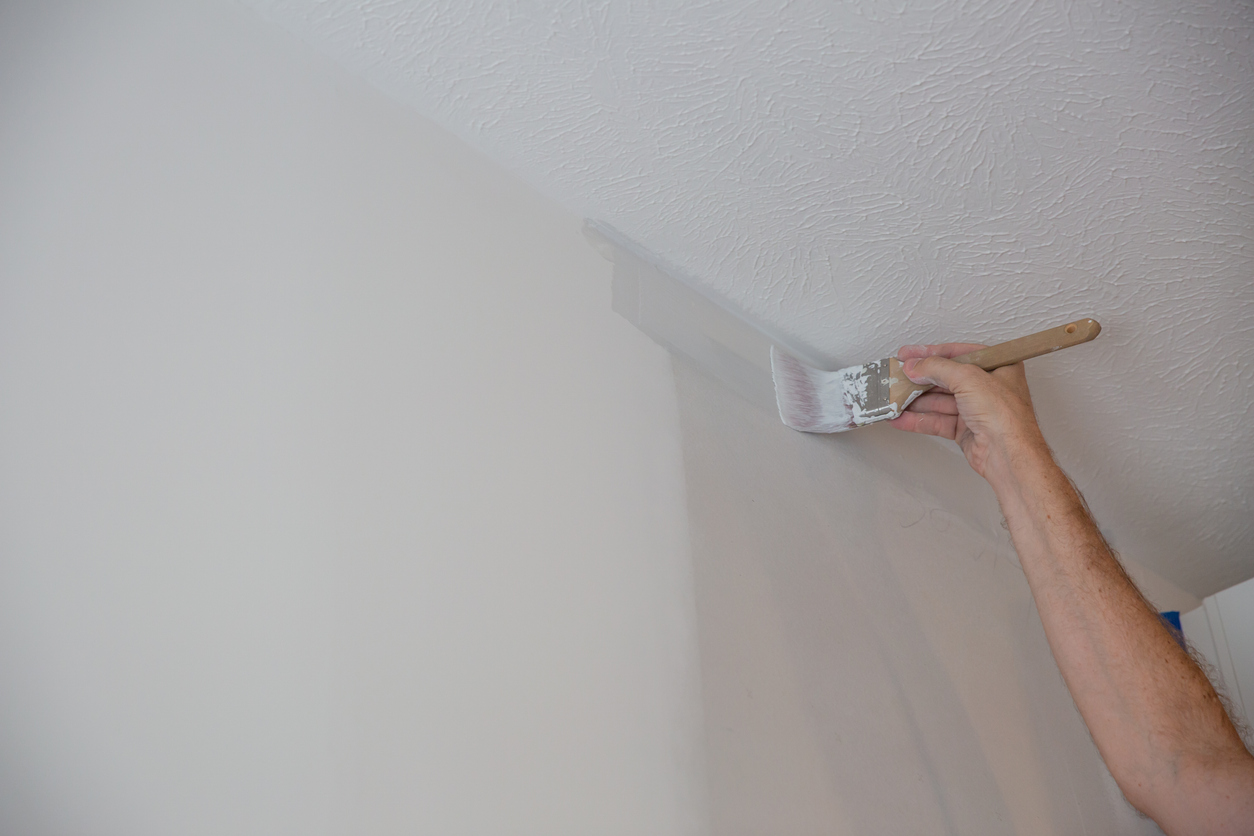When painting your home, picking the right paint is more than just about color—it’s about ensuring a healthy, long-lasting finish. With the growing concern for our environment and personal health, choosing environmentally friendly or “green” paints has become increasingly important. These paints reduce harmful emissions and provide a safer atmosphere for your family. Let us walk you through what makes paint truly “green” and how to choose the best one for your home.
What are “Green” Paints?
Green paints are designed with both health and the environment in mind. Unlike traditional paints, which can contain harmful chemicals, green paints are formulated to be low in volatile organic compounds (VOCs). VOCs are chemicals that evaporate into the air and can cause headaches, dizziness, and even long-term health problems with prolonged exposure. Green paints reduce these risks by minimizing or eliminating VOCs, making them safer for your home and your family.
But VOC content isn’t the only factor that makes paint “green.” It also involves what’s not included in the paint. Green paints avoid harmful chemicals like formaldehyde, lead, and other toxic substances. They also steer clear of heavy metals and other harmful additives that can linger in your home long after the paint dries.
Why Choose Green Paints?
So, why should you choose green paint? First and foremost, it helps create a healthier indoor environment. When you paint your walls with green paint, you reduce the number of toxic fumes that your family breathes in. This is especially important in homes with children, pets, or individuals with respiratory issues.
Beyond the health benefits, green paints are better for the environment. They reduce your carbon footprint by emitting fewer pollutants into the air. Many green paints also use sustainable ingredients and come in eco-friendly packaging, further minimizing their environmental impact.
In addition, green paints have evolved significantly over the years. They now offer the same durability, coverage, and vibrant colors as traditional paints, so you don’t have to compromise on quality or style when making an eco-friendly choice.
How to Identify Green Paints
Thanks to clear labeling and certifications, identifying green paints is easier than ever. When shopping, look for labels that indicate “low VOC” or “no VOC.” Paints with the “Green Seal” or similar certifications have been tested for their environmental impact and health safety.
It’s also essential to do a little research on the brand and product. Many major paint companies now offer lines specifically designed to be environmentally friendly. Check out their websites or ask your local paint store for recommendations.
Choosing the right green paint helps protect the environment and ensures that your home is a safe and pleasant place to live.
Popular Green Paint Brands
When it comes to choosing green paints, several brands have established themselves as leaders in the market, offering eco-friendly options that don’t compromise on quality. Here’s a list of some popular green paint brands to consider:
- Benjamin Moore Green Promise – Known for vibrant colors and low VOC levels.
- Sherwin-Williams GreenSure – Combines durability with environmental responsibility.
- Behr Premium Plus – Offers excellent coverage with low VOC content.
- Real Milk Paint – Made from natural ingredients, safe, and biodegradable.
- Yolo Colorhouse No VOC Paint – Offers a wide range of colors with zero VOCs.
- Dunn-Edwards EcoShield – Provides a durable finish with minimal environmental impact.
- AFM Safecoat – Specially formulated to avoid toxins and chemicals for healthier indoor air.
- Clare Paint – Zero VOC paint with designer-curated colors, emphasizing sustainability.
- Farrow & Ball Modern Emulsion – High-performance paint that’s eco-friendly and stylish.
- Eco Spec by Benjamin Moore – Zero-VOC, perfect for interior spaces with a focus on sustainability.
These brands have made it easier for homeowners to find eco-friendly options without sacrificing quality. Whether you’re looking for a specific color or finish, you can find green paint from these trusted manufacturers that meet your needs.
Features to Look For
When selecting green paint, looking beyond just the label is important. Start by checking the VOC levels—paints labeled as “low-VOC” typically have 50 grams per liter (g/l) or less, while “no-VOC” paints contain five g/l or less. These levels ensure that your home remains safe and healthy after painting.
Additionally, other harmful substances that might be present in the paint should be considered. Avoid paints with heavy metals like lead, cadmium, or mercury, which can have long-term health effects. Some green paints, like Real Milk Paint, use natural ingredients that make the paint safer and provide additional benefits, like being antibacterial and fire-retardant.
It’s also a good idea to check for eco-friendly certifications or endorsements, such as the Green Seal, which indicates that the paint has been tested for environmental impact and safety.
Impact of Tinting on VOC Levels
One thing to keep in mind when choosing green paints is the effect of tinting. Adding color to your paint can sometimes increase the VOC levels, even if the base paint is labeled as low- or no-VOC. It’s essential to ask about the VOC levels after tinting, especially if you’re choosing a darker or more intense color.
Some brands offer pre-tinted paints formulated to maintain low VOC levels, so if you have a specific color in mind, it might be worth checking if a pre-tinted option is available. By paying attention to these details, you can ensure that your home remains as eco-friendly as possible while achieving the desired look.
Federal Regulations on VOCs
When it comes to green paints, it’s not just about picking a product that feels good; it’s about making sure it meets certain safety standards. That’s where federal regulations on VOCs (Volatile Organic Compounds) come in. These regulations limit how much VOC content is allowed in different types of paints, ensuring that the products you use are safe for you and the environment.
Current Standards
The Environmental Protection Agency (EPA) has established specific VOC limits to protect air quality and public health. The federal VOC limit for flat paints is 250 grams per liter (g/l), while other types, like non-flat paints, are allowed up to 380 g/l. These limits help reduce the release of harmful chemicals into the air, making your home safer after a fresh coat of paint.
But if you’re aiming to be more environmentally conscious, you’ll want to look for paints that exceed these minimum standards. Low-VOC paints contain 50 g/l or less, significantly reducing the amount of toxins released during and after painting. If you want to go a step further, no-VOC paints, which have five g/l or less, are your best bet.
What to Look for in Low/No-VOC Paints
When you’re shopping for paint, the labels can tell you a lot about what’s inside the can. Look for products labeled “low-VOC” or “no-VOC” to ensure you get a safer option. It’s also helpful to check the paint’s data sheet or ask the retailer about the specific VOC content.
In addition to VOC levels, other factors like odor and the presence of other harmful chemicals should be considered. Low-odor paints are especially beneficial if you’re sensitive to smells or painting a space that will be used immediately after the job is done. Some green paints also avoid other toxic substances, like formaldehyde and heavy metals, which further contribute to a healthier environment.
The Importance of Verification
It’s easy to assume that all products labeled as “green” are safe, but it’s important to verify these claims. Some paints might meet the minimum federal standards but contain other harmful substances. Always take the time to read labels carefully, consult with experts, or visit the manufacturer’s website for detailed information.
By understanding and following these regulations, you can make informed decisions that benefit your home and the environment. Remember, choosing the right paint is just one part of the process—hiring experienced professionals like Custom Painting, Inc. ensures that the job is done correctly and safely.
Choosing the Right Paint for Different Surfaces
Picking the right paint isn’t just about color – it’s about choosing the right type of paint for each surface in your home. Different materials require different types of paint to ensure a long-lasting, beautiful finish. Let’s explore how to select the best paint for each area of your home.
Exterior vs. Interior Paints
When painting your home, it’s essential to distinguish between exterior and interior paints. Exterior paints are designed to withstand the elements—rain, wind, and sun—so they are more durable and have added protection against fading and moisture. Interior paints, on the other hand, are formulated for easier cleaning, less odor, and smoother finishes suited for indoor living spaces.
For example, suppose you’re painting the outside of your home in Danville, where the weather can be unpredictable. In that case, you’ll want an exterior paint that can resist moisture and protect against UV damage. However, you might prefer a paint that’s easy to clean, especially in high-traffic areas like kitchens or hallways.
Selecting Paint Based on Surface Material
Different surfaces in your home require specific types of paint for the best results. Here’s a quick guide:
- Wood Surfaces: Wood breathes and expands, so choose a paint that is flexible and can handle these changes without cracking. An exterior-grade latex paint is typically the best choice for wood surfaces.
- Concrete and Brick: You’ll need a paint that can adhere well and provide good coverage for these porous surfaces. Masonry paint is specially formulated for this purpose, offering excellent durability and resistance to moisture.
- Drywall: Interior walls made of drywall usually benefit from a good-quality latex paint. It’s easy to apply, dries quickly, and provides a smooth, even finish.
- Metal Surfaces: Metal requires paint that can resist rust and corrosion. For exterior metal surfaces, consider an oil-based paint or a specially formulated metal paint that offers strong adhesion and protection.
Special Considerations for High-Moisture Areas
Bathrooms, kitchens, and basements are prone to higher levels of moisture, so they require paints that can resist mold and mildew. Look for paints labeled as “bathroom” or “kitchen” paints, which are formulated to handle these conditions better than standard interior paints.
By selecting the right type of paint for each surface and considering the specific needs of your home’s environment, you’ll ensure that your paint job looks great and lasts for years to come.
Conclusion
Choosing the right paint for your home is about more than just aesthetics—it’s about creating a safe, healthy, and sustainable environment. By opting for green paints and following best practices, you’re positively impacting both your home and the planet. If you’re ready to start your painting project but want expert guidance, Custom Painting, Inc. is here to help. With our expertise in using eco-friendly paints, we’ll ensure your home looks beautiful and stays healthy. Give us a call today at 925-866-9610 or use our contact form to get started!



